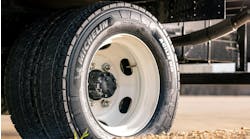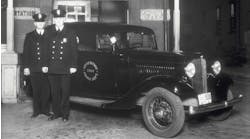Mack Trucks has a long history. And now it has made history.
The North American OEM’s Australian branch has built what it says is the world’s most expensive big rig, eclipsing a $481,000 model built in the U.S. While Mack Trucks Australia will not say specifically how much this custom rig cost, it did provide a few details, such as who would order such an expensive, customized ride, and why?
The answer: Malaysia’s Sultan Ibrahim Ismail of Johor.
While most truckers buy trucks to make a living, certainly the Sultan is not worried about that. He does, though, have a need to transport his private power boat and his vehicle of choice is a Mack Super-Liner.
Mack Trucks Australia built the model, which features a 695 hp. MP-10 Mack engine. The Sultan provided Mack Trucks Australia company vice president Dean Bestwick with a detailed design brief.
“The fanciest extra in most Aussie trucks is a microwave or a small fridge,” Bestwick said. “We’d never contemplated the features that have been included in His Majesty’s truck. “This is the most luxurious truck to have been built in Australia and probably the planet.”
Thirty-five Mack employees worked on the truck and a team of engineers will fly to Singapore to unload the truck after it is shipped from the Port of Brisbane and carry out a test run with the rig towing the Sultan’s powerboat.
Mack continues its legacy
Mack continued making history when it rolled out its new maximum uptime package, Mack Premium Service Agreement, which can be added to new truck purchases or to trucks in service, prior to their first service interval.
The service agreement replaces Mack’s existing maintenance plans and transfers routine and preventive maintenance to the Mack dealer network. According to the company, customers can tailor the plans to the length of their ownership cycle and to the expected operating duty conditions of the truck.
According to Stu Russoli, Mack highway product manager, that means instead of a general five-year package, fleets can opt for 100,000 miles, 200,000 miles, 300,000 miles, and so on—depending on how many miles they run.
“If you run a dump truck, you might only use it for 100,000 miles and that’s it,” Russoli said. “You can pick that maintenance package for just what you need. If you need to go 300,000 miles you can pick that package and it gives you more—like when you need to come in and get your oil checked, it breaks that down by 100,000 miles.
“You can pick what you need and set up a package for what you run. If you run highway, you’ll probably want the 500,000-mile bundle,” Russoli added. “Basically, you go in and pick the package that matches you.”




